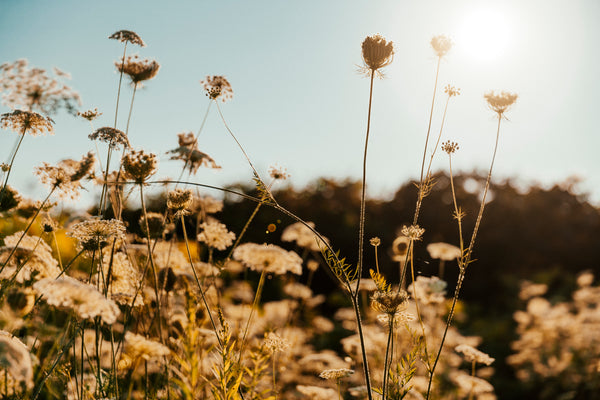July 23, 2023

In our fast paced world, it's easy to overlook the age-old wisdom of traditional herbal remedies. One such remedy, the poultice, has been used for centuries to soothe various ailments with the power of herbal medicine. In this blog post, we'll delve into creating a comfrey poultice, a herbal application renowned for its therapeutic benefits. Whether you're dealing with minor injuries, inflammation, or bruising, a comfrey poultice might just be the natural remedy you've been looking for!
What is a Poultice?
Before we dive into the wonders of comfrey, what is a poultice? A poultice is a traditional herbal remedy used for topical application to the skin. It involves creating a moistened herbal mixture, typically from fresh or dried herbs, which is then directly applied to an area of the body. Poultices allow the skin to absorb the beneficial compounds directly to the affected area. This approach offers a gentle and natural way to support the body's healing processes.
The Benefits of Comfrey
Comfrey (symphytum officinale) has long been celebrated for its many health benefits, especially when applied topically. Comfrey poultices are effective in managing musculoskeletal injuries like sprains and strains, reducing post-workout soreness, and promoting healing after fractures or bone breaks.
However, it's crucial to tread with caution when using comfrey. Never apply it to open or infected wounds, as it may cause rapid skin healing without addressing underlying infections. Additionally, internal consumption of comfrey products is discouraged due to the presence of pyrrolizidine alkaloids (PA), which can be toxic to the liver if taken over extended periods or in large amounts. If pregnant and breastfeeding always consult with a practitioner before consuming herbal medicine.

Creating a Comfrey Poultice: A Step-by-Step Guide
What you will need:
- A dozen fresh comfrey leaves (including stems)
- 1 cup of water
- 2 handfuls of flour
- A few old dishcloths or unused pieces of cloth

Step 1: Harvest and Wash the Comfrey
Gather a handful of fresh comfrey leaves, ensuring they are clean and free from dirt or debris.
Step 2: Prepare the Comfrey
If you're using comfrey leaves, chop them into small pieces. For comfrey root, cut it into thin slices. This step helps release the beneficial compounds from the plant, maximising the poultice's healing potential.
Step 3: Crush the Comfrey
Using a mortar and pestle or a blender, crush the comfrey into a smooth paste. Add a small amount of water to achieve the desired consistency, ensuring that the mixture is easily applicable. Put this freshly-blended paste in a bowl. Add a handful of flour or clay to the paste and stir it in with your hands.
Step 4: Optional - Warm the Mixture
If you prefer a warm poultice, gently heat the comfrey paste on the stovetop. Remember not to make it too hot to avoid burning your skin.
Step 5: Apply the Poultice
Lay a clean cloth or bandage on a flat surface and spread the comfrey paste evenly over it, leaving some space around the edges for folding. Aim for a poultice thickness of about 0.5 to 1.5 cm.
Step 6: Wrap and Secure the Poultice
Fold the cloth or bandage over the comfrey paste, creating a pack that's easy to handle and apply to the affected area. Secure the poultice in place with a bandage or gentle pressure, if needed. Let it sit for 20 minutes to 2 hours, and feel free to reapply throughout the day as necessary.
Step 7: Remove the Poultice
After the desired time has passed, carefully remove the poultice from your skin. Rinse the area with water to eliminate any residue.

Cold or Hot Poultice: Choosing the Right Temperature
Knowing when to use a cold or hot poultice can enhance its effectiveness in treating specific conditions. Cold poultices are ideal for acute injuries like sprains, strains, bruises, and swelling, as they help reduce inflammation and numb the area, providing relief from pain. On the other hand, hot poultices are perfect for chronic conditions or muscular aches and pains, as they promote increased blood flow, relaxation, and comfort. Select the temperature that suits your specific needs, but always listen to your body and seek professional advice when uncertain.
Whether you're seeking relief from minor injuries, inflammation, or bruising poultices can be a valuable addition to your self-care toolkit. Remember to choose the right herbs for your specific needs, follow the preparation steps and seek professional advice when needed. Let nature's healing touch provide a gentle and holistic approach to support the body's innate ability to heal itself.
Much love,
Cat X
Comments will be approved before showing up.
October 18, 2018
October 10, 2018

Let's Stay Connected
Sign up for monthly Recipes, DIY's, Health, Wellness & Workshop updates.